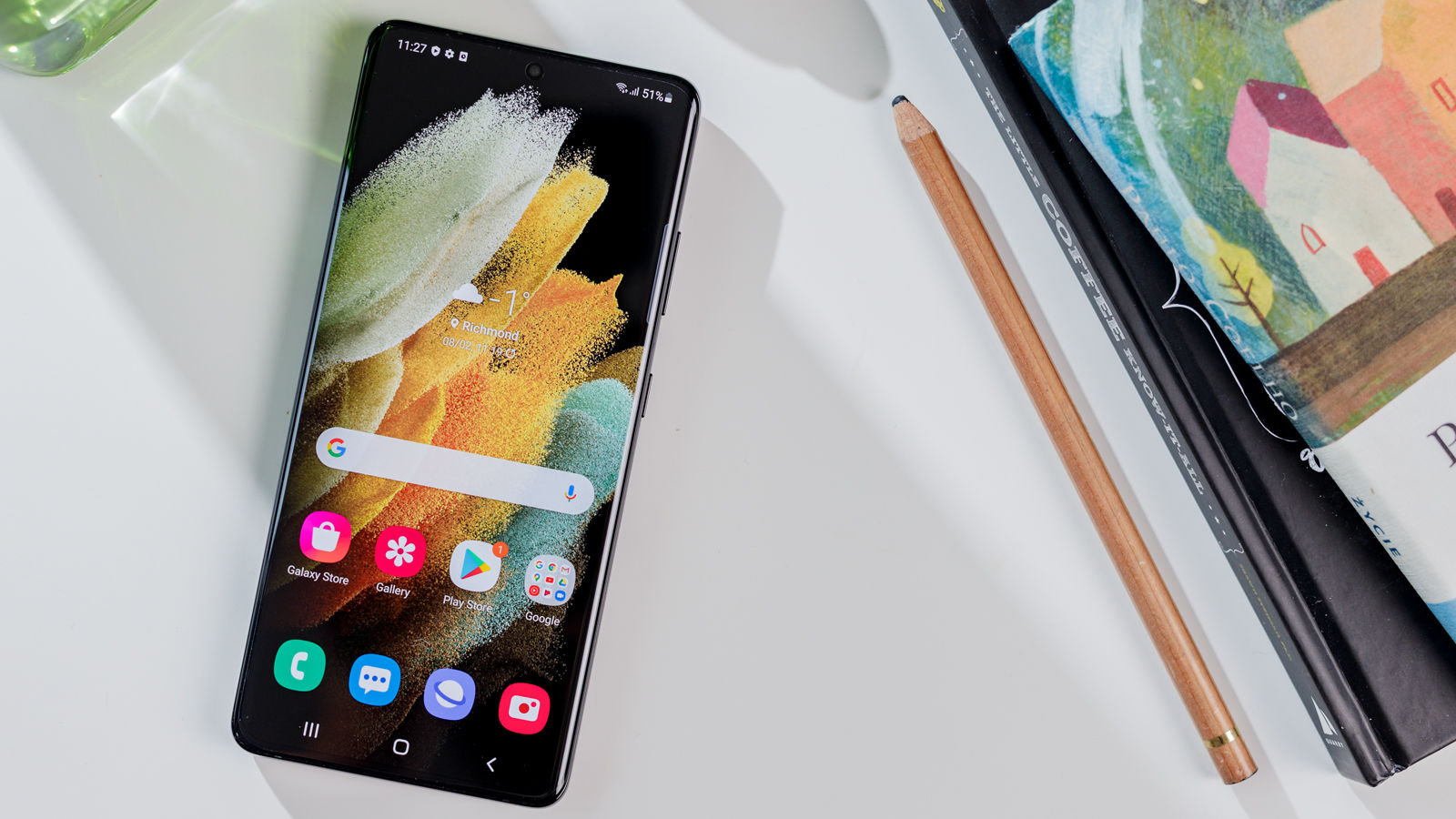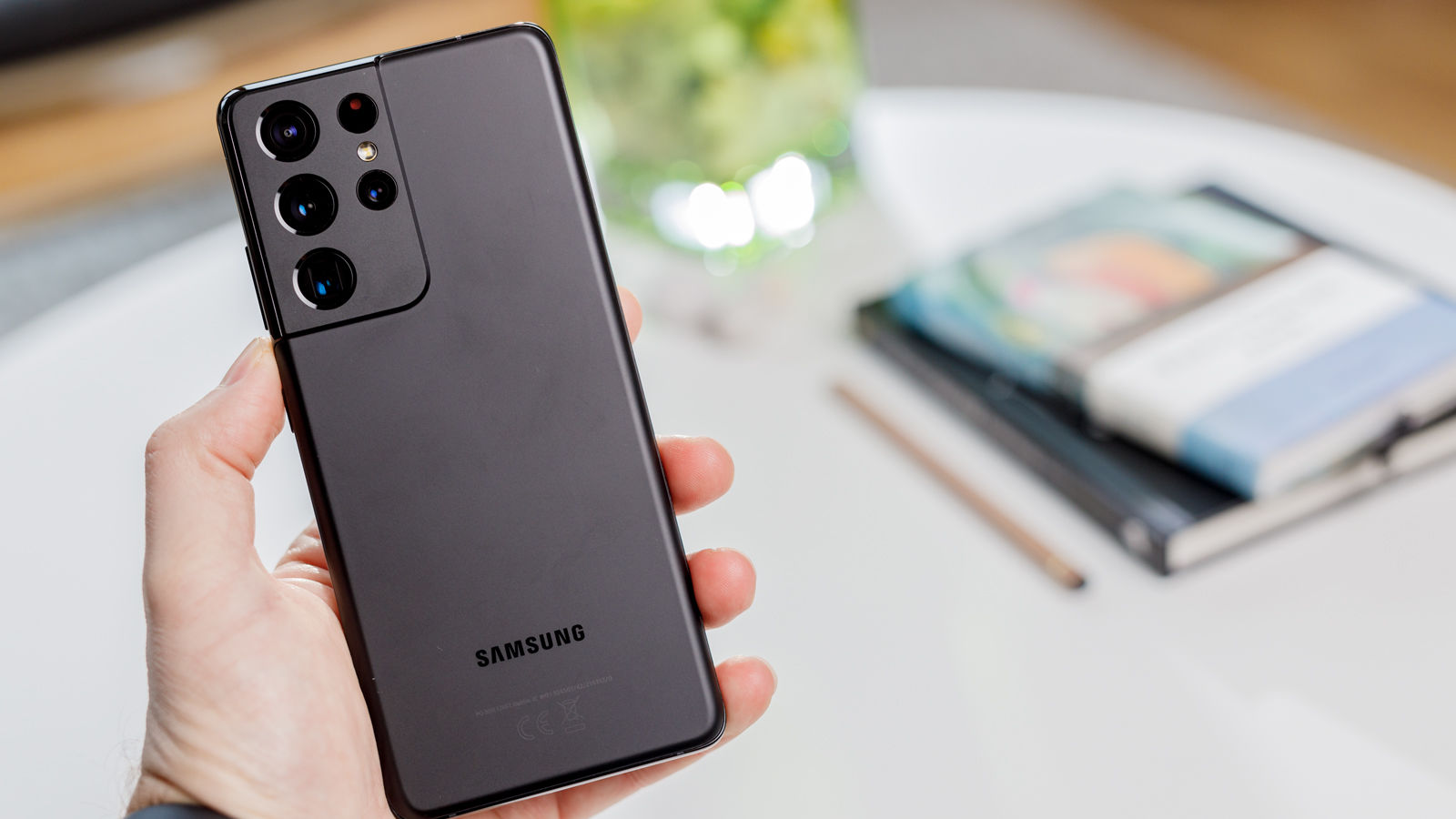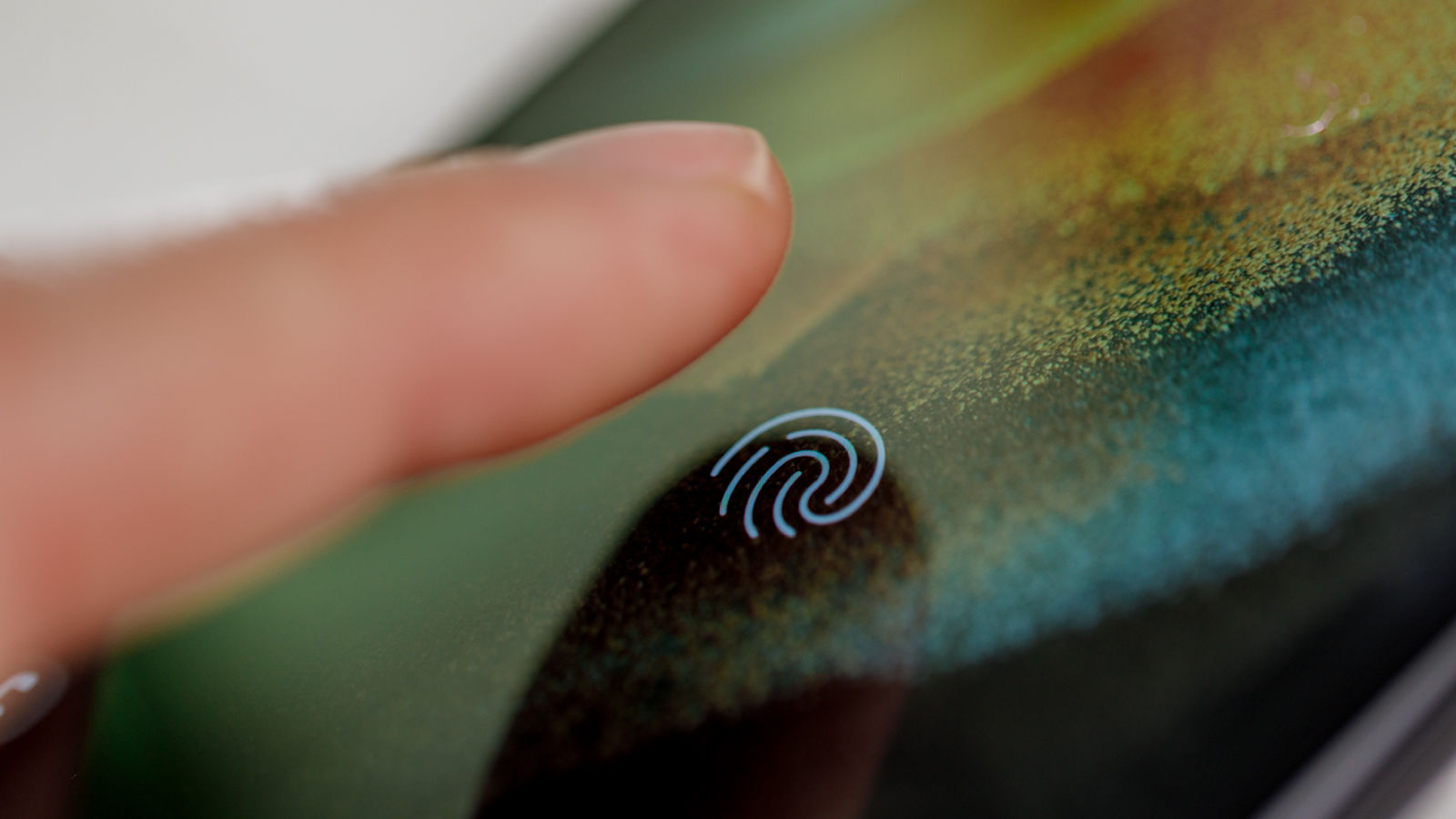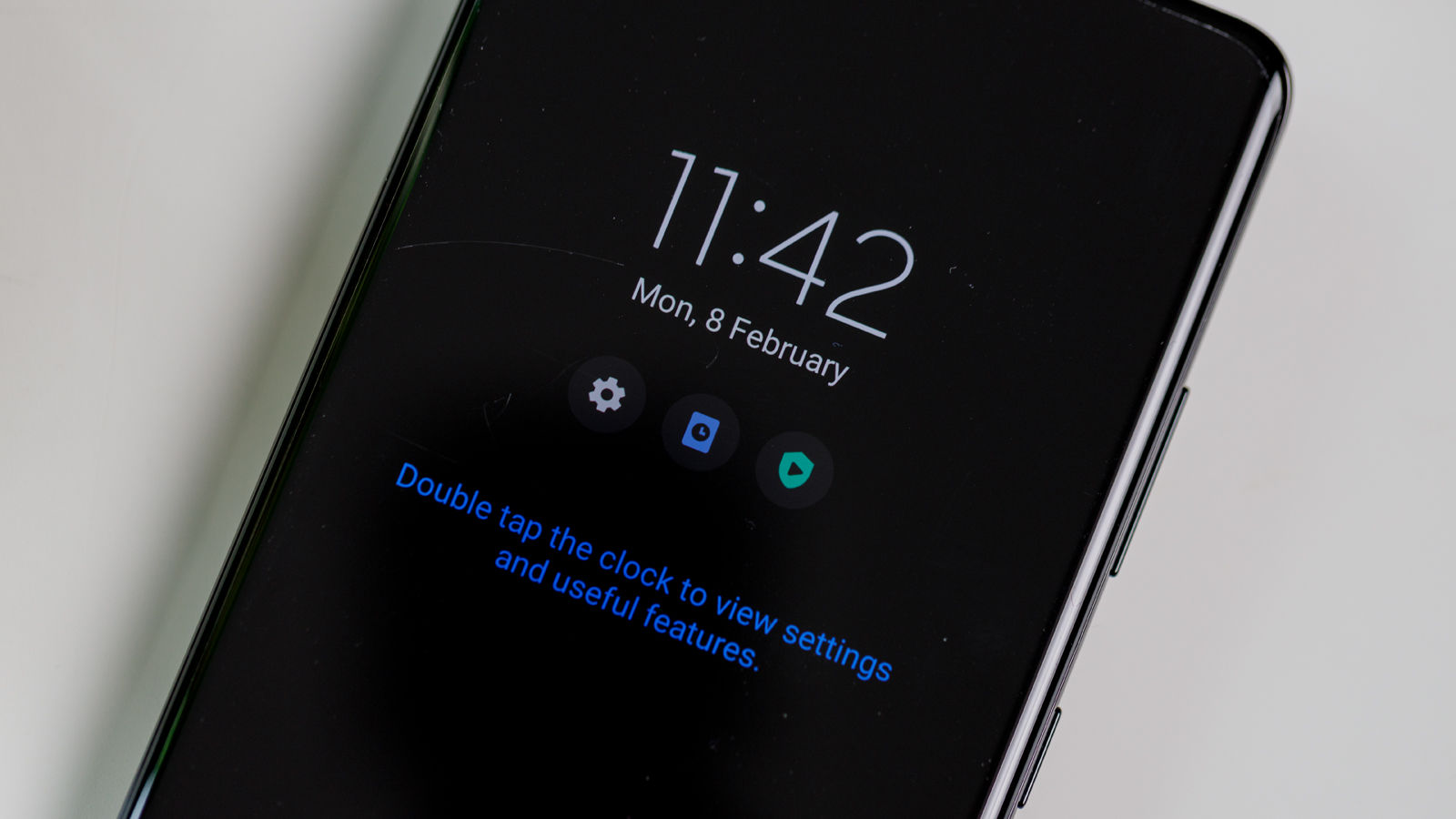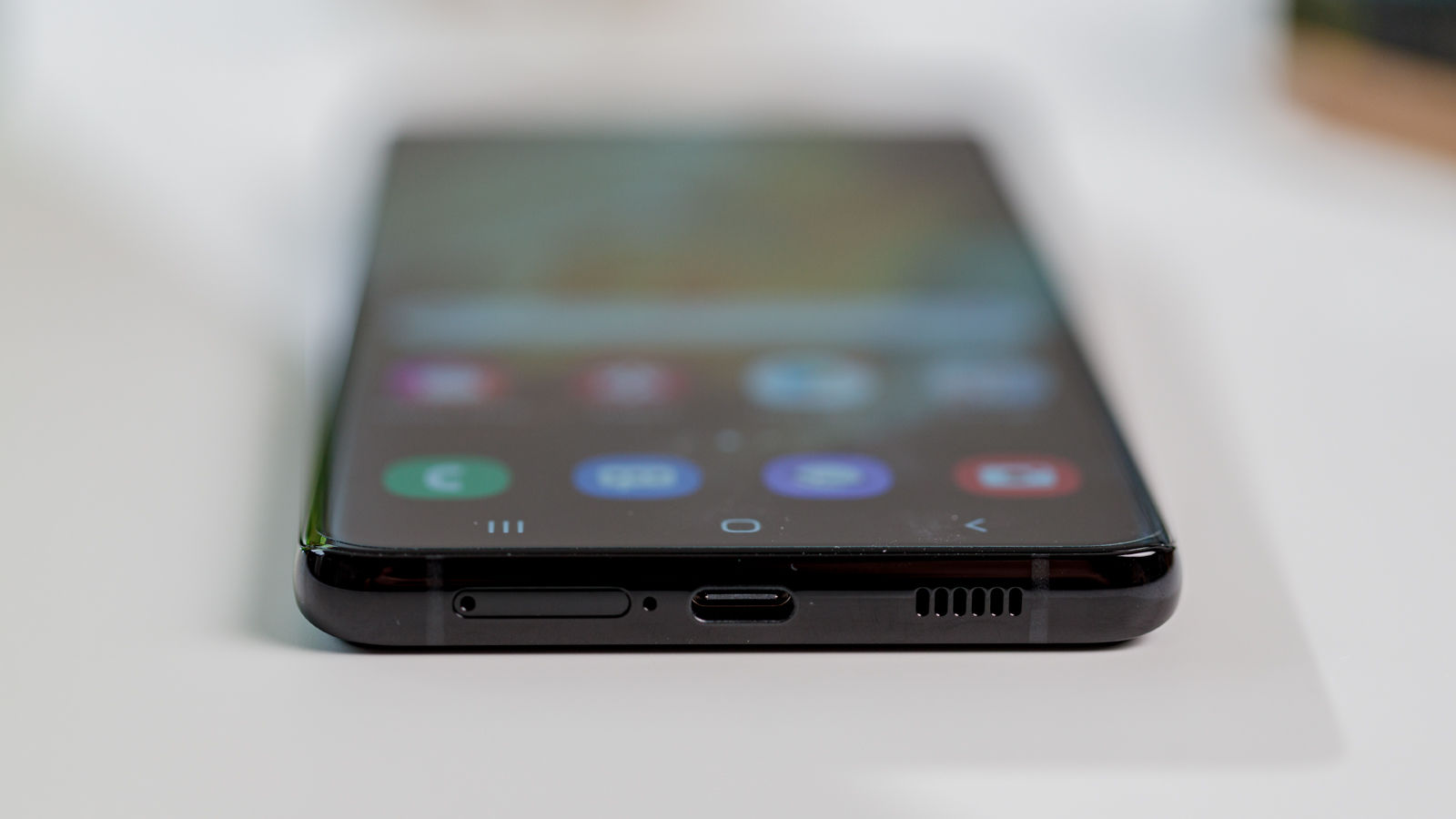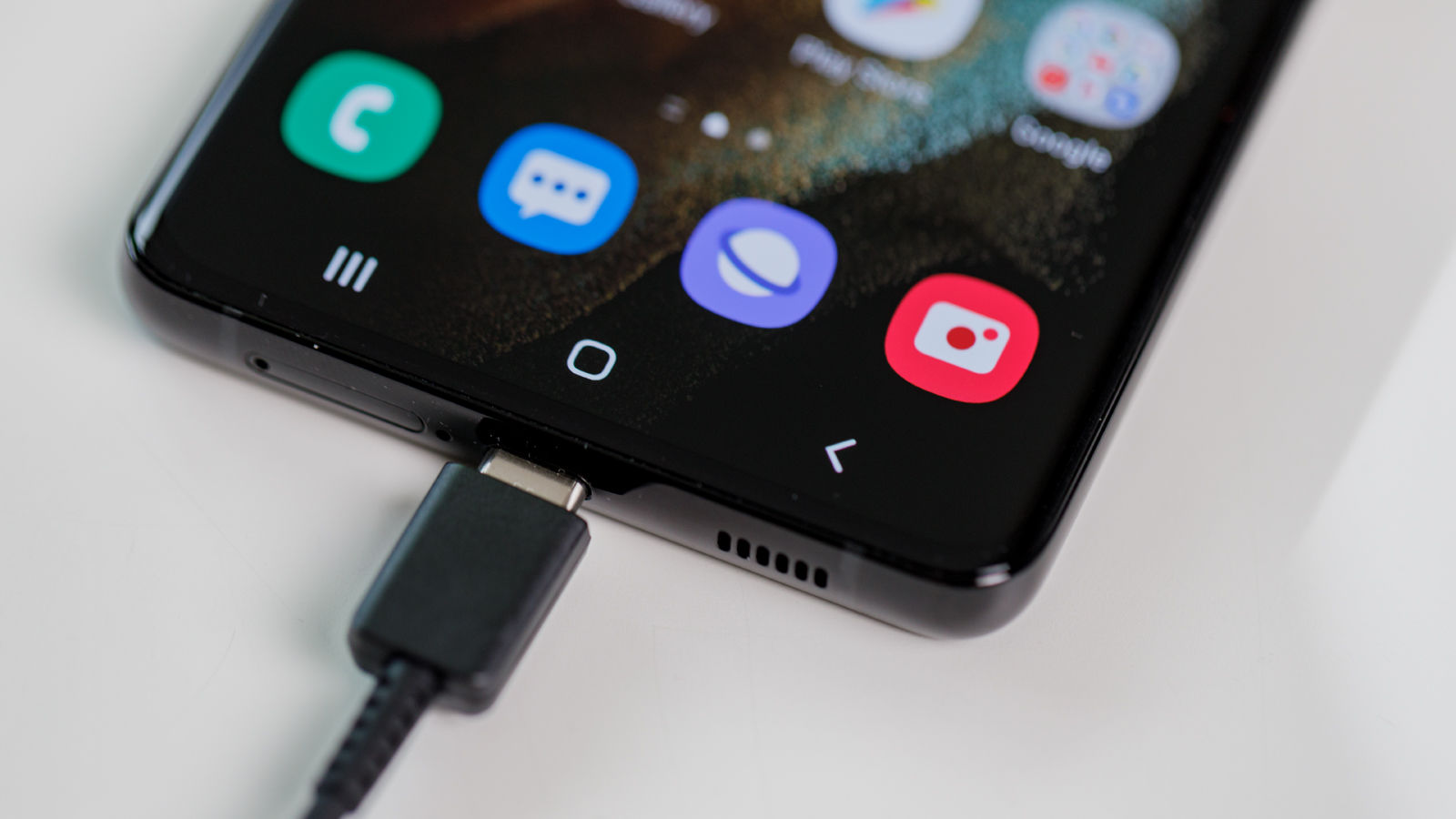Just as hypercars have emerged as a class above supercars, so too have phones like the S21 Ultra in the flagship space – billed as uncompromising devices that can handle anything a user dares to throw at them, without so much as breaking a sweat – albeit for a premium, of course. The idiom ‘the bigger they are the harder they fall’ felt apt for last year’s Galaxy S20 Ultra, which promised so much – primarily from its impressive-sounding camera specs – but underdelivered as a final product. With this year’s S21 Ultra, we’re hoping Samsung has righted the wrongs of its predecessor and in the same breath, created a smartphone truly fitting of the ‘Ultra’ moniker.
Design and build
There’s no getting around the fact that aesthetically 2020 was an off-year for Samsung’s Galaxy S phones. The S20 Ultra was possibly the worst offender of the bunch; with its large glossy form rendered in flat colours and laden with an unsightly black rounded rectangle of a camera arrangement, that seemed like an afterthought. Almost one year on and while the S21 range is undeniably an evolution of the S20 line’s design, it’s experienced something of a “glow-up” that brings sharper aesthetics and more confident forms to the table. The Galaxy S21 and S21+ may turn heads with their two-tone signature Phantom Violet colourway but the Ultra comes in far more sedate finishes that draw the eye to the phone’s form first and foremost, and that’s no bad thing. The ‘contour cut’ camera module is the new defining design element across this year’s Galaxy S range and the Ultra’s interpretation is the boldest and most imposing yet, spanning almost half of the phone’s width (it’s so big that the phone actually benefits from less-severe wobble when placed back-down on a flat surface, compared to the narrower camera arrangements of its launch siblings). In the case of the Ultra, there was no way this module wasn’t going to be huge though; with four imaging sensors – including a 108Mp primary camera – a periscopic zoom arrangement, a laser autofocus system and an LED flash to accommodate. Rather than contrasting colours, it’s the contrasting textures that give the S21 Ultra a more sophisticated look and feel than its competition; with a glossy colour-matched metal frame against a lightly-textured satin-finish back and camera frontage that collectively imbue the phone’s aesthetics with a subtle confidence, while also deftly repelling fingerprints and smudges. Something about the alternative Phantom Silver colourway evokes the stylings of vintage 80s Japanese tech and grant the phone a distinct retro feel as a result, while the two-tone carbon-fibre-toting Samsung.com-exclusive finishes seem poorly-considered and executed by comparison – particularly the Phantom Brown option. Beyond finish, the rounded edges and slightly curved Gorilla Glass Victus on the back and front ensure that despite its size, the S21 Ultra feels comfortable to hold. This sizeable 6.8in handset – with its all-glass-and-metal construction (for reference, the base Galaxy S21 features a plastic back) – also proves deceptively lightweight, despite clocking in 228g. Being a Samsung flagship, there’s the expected top-tier fit and build quality, the absence of a headphone jack and IP68 dust and water resistance to consider too.
Display and S Pen
While 0.1in smaller than last year’s entrant, you’re still getting an expansive 6.8in panel to play with; using the same WQHD+ resolution, 20:9 aspect ratio and HDR10+-compliant ‘Dynamic AMOLED 2X’ technology. There was little to complain about with the screen on last year’s Ultra and while the expansive size and the rounded edges won’t be to everyone’s taste, the S21 Ultra’s display is a joy to interact with; boasting stunning contrast, vibrant colours, broad dynamic range and pin-sharp clarity that nothing else (save for perhaps Oppo’s Find X2 Pro) collectively comes close to matching right now. One small improvement is a maximum peak brightness of 1500nits (up from 1400), although both this year’s and last year’s phones offer excellent visibility regardless, even in bright surroundings. Where the S21 Ultra’s display pulls out in front is with its ability to display content at both its native resolution and at its maximum 120Hz refresh rate, simultaneously. Last year’s Galaxy S and Note devices had you choose between full resolution or super-smooth viewing; with the S21 Ultra, there are no compromises to be made in this regard. While you can lock resolution, refresh rate (under the ‘Motion Smoothness’ setting) can only be dialled from ‘Standard’ (60Hz) up to ‘Adaptive’; which means the Ultra doesn’t run at 120Hz constantly but instead automatically scales from as low as 10Hz to a peak of 120, depending on the use case at hand. This dynamic adjustment isn’t unique to Samsung’s devices but serves as an essential means of guaranteeing respectable battery life, while also still delivering high refresh rate viewing. Beyond a top-tier visual experience, the screen also showcases an upgraded ultrasonic fingerprint sensor, which finally feels genuinely competitive against older capacitive sensors (like the one found on the back of the Pixel 5), thanks to improved read speed and, perhaps more importantly, more consistent reliability.
S Pen
One other display party piece is – for the first time on a Galaxy S phone – support for Samsung’s S Pen stylus. At launch, Samsung introduced two new styli alongside the S21 Ultra; a conventional S Pen and the still-unreleased (at the time of writing) S Pen Pro. For most users looking to pull in Note-like functionality, the standard S Pen will do the trick (or if you have an existing Note device, their S Pens work too). Latency is excellent (when testing with the Note 20 Ultra’s S Pen), with a seemingly-identical 9ms response time, or something very close to it (likely made possible by its use of an LTPO display, instead of the S21/S21+’s LTPS panel, just like the Note 20 Ultra). The main difference between the S Pen experience and that of the one promised by the S Pen Pro is the additional Bluetooth functionality that Note 20 users will already be familiar with; controlling the phone’s camera and navigating around the user experience with simple air gestures. That said, thanks to the Wacom tech at play, you can still press the side button on the S Pen (even the standard model) when hovering the nib above the surface of the display for additional features and functions. While the S21 Ultra is already a more niche device compared to the standard S21 and S21+, and the subset of those who buy one who might also consider pairing the experience with an S Pen is smaller still, it’s nice to see that Samsung has brought as much of the established feature set of its signature stylus to a product line that previously had nothing to do with the peripheral. Samsung also sells numerous cases that feature a cavity to hold the S Pen, as unlike the Note, there’s no integrated S Pen storage on the S21 Ultra, while we’re yet to hear of any storage setup for the S Pen Pro.
Software and features
The latest build of Samsung’s user experience – One UI 3.1 – debuts on the Galaxy S21 range. For those familiar with the previous generation of One UI, this iteration doesn’t rewrite the rulebook but it does focus on improving aspects like notification clarity and dress in a few new adornments, such as animated call screens. For those coming from Android devices that run closer to a stock experience (Google’s, Motorola’s or Nokia’s, for example) One UI will take a little getting used to, although the learning curve will likely be shallower than moving to a heavier-handed skin like Oppo’s ColorOS, Xiaomi’s MIUI or Huawei’s Emotion UI. Beyond the platform’s distinct squircle app iconography and a reworked notifications/quick settings pane (compared to stock), One UI features its own app store in the Galaxy Store (which sits alongside the Google Play Store), as well as standout features like Edge Screen – designed to improve the productivity chops of the user experience – particularly useful on the Ultra’s expansive display. At the same time as ensuring One UI is distinct, the experience doesn’t completely turn its back on the underlying improvements and tweaks introduced in Android 11, with notifications grouped by app category and active media playback controls contained within a dedicated carousel in the notifications shade. Samsung Free – Samsung’s dedicated news and experiences feed – is also optional, with the ability to display it or replace it with Google Discover, as you’d find on a near-stock Android device. Another area where the Ultra sets itself apart from its launch siblings is in its connectivity; being the only member of S21 range to boast the latest WiFi 6E and sharing in the S21+’s UWB (ultra-wideband) support. Beyond these highlights, the Ultra also brings NFC and Bluetooth 5.0 to the table.
Performance
At launch, the S21 range features as part of a rather exclusive group of phones powered by Qualcomm’s latest flagship Snapdragon 888 SoC – or in markets including Europe and the UK – serve as the debut devices for the company’s own top-tier Exynos 2100 chipset (as in the model tested here). Those in Exynos-toting regions have, in the past, been driven to frustration, as the models relying on Samsung’s own silicon have consistently fallen short of their Snapdragon-based doppelgängers, with regards to both performance and power efficiency. In the lead up to the Exynos 2100’s release, however, Samsung and the early benchmarks suggested that its latest chip would finally be able to hold its own against Qualcomm’s 888. While we didn’t perform any side-by-side testing with the Ultra specifically, working with our colleagues at sister site PC World in the US and our respective Snapdragon and Exynos-powered base S21’s, we learnt that both variants offered up a pleasing consistency. In the wider review sphere too, while 888-toting Ultras still tend to lead over Exynos versions, the performance gap is insignificant, especially with regards to real-world use cases. Power efficiency does also still favour Qualcomm’s hardware but what was once a chasm of disparity is now more of a crack that we home Samsung continues to close. In the case of the Ultra, the phone’s top-tier silicon comes accompanied by the most amount of (LPDDR5) RAM across the S21 range, with a baseline of 12GB (as tested) and a top-tier 16GB – if you fork out for the highest 512GB storage capacity model. While fast UFS 3.1 storage is appreciated, the removal of microSD expandability across the S21 range feels like a loss, especially on the otherwise feature-crammed Ultra. The Galaxy S series has long been one of the last flagship phone families to offer such flexibility, so its removal is disappointing here. Fixed storage aside, it’s hard to argue with the rest of the hardware Samsung has chosen to slot into the S21 range and, in particular, the Ultra.
The results from our benchmarking tests, which include all three Exynos-powered S21s devices, revealed that generally speaking, the S21+ delivered the most consistent performance, although the gap between each device was negligible. For those looking to pick the S21 Ultra up with competitive mobile gaming in mind, it’s also worth dropping resolution down to Full HD+, as graphical tests place it on-par with its launch siblings by doing so (all of which are some of the highest scores we’ve tested on any phone). If you’re buying a phone for performance above all else, then right now, the S21 range as a whole are among the best options out there; the additional RAM packed inside the Ultra, will simply help ensure the phone can more readily multitask and remain more responsive in the long-term.
Battery life
Battery capacity remains consistent compared to last year’s S20 Ultra, at a respectably large 5000mAh. Considering the S21 Ultra is the first Galaxy device to offer 120Hz high refresh rate viewing at WQHD+ resolution, with the exception of the benchmarks specifically stated above, the device was tested with both these key display features enabled at all times. In spite of the expected strain running the display at full tilt undoubtedly causes, the S21 Ultra’s longevity is impressive, able to deliver a day’s worth of heavy use, and a day and a half of more conventional use; with almost six hours of screen-on time on offer each charge. In a market where companies like Oppo and Xiaomi are pushing past 65W fast charging, the S21 Ultra’s maximum 25W charging speeds sound comparatively pedestrian. While there’s no escaping the fact that Samsung is dragging its feet on fast charging (having actually pulled back on the 45W charging exclusive to last year’s S20 Ultra), in real-world testing 56% charge after 30 minutes is wholly respectable and should see most users through to the day’s end. The big caveat with the Ultra isn’t charging speed so much as the charger itself – there isn’t one, not in-box, at least. Samsung has followed Apple’s lead and ditched in-box power adapters, meaning the Ultra comes in much more compact packaging but will also likely charge slower than the advertised maximum rate, unless you’ve already invested in Samsung’s 25W charger.] Unlike the base Galaxy S21, which produced near-identical results in testing when charging with a generic 27W PD charge and an official 25W Samsung fast charger, for whatever reason – be it the charging management system tied to the Ultra’s larger battery or something else – the official Samsung charger produced refills the phone’s battery markedly faster than the PD charger, which only gets the cell to 33% in the same time frame. As such, while forking out for an official Samsung charger doesn’t hold any value if you already have a fast PD charger where the Galaxy S21 and S21+ are concerned, it makes a notable difference when paired with the S21 Ultra.
Camera
As touched on earlier, the Galaxy S20 Ultra’s biggest stumbling block was a bold camera setup that, in practice, underdelivered – primarily as a result of some problematic focusing issues and zoom capabilities that just weren’t as impressive as Samsung had hyped them up to be. With the S21 Ultra, the company has reworked every facet of this system and the results speak for themselves. An updated 108Mp ( ISOCELL HM3) lead sensor is now supported by a laser autofocus module (as implemented on the Note 20 Ultra) and while the autofocus-capable 12Mp ultrawide is just as you’d find it on the S21 and S21+, there’s new a dual telephoto zoom system that features dedicated 3x and 10x optically-magnified lenses (the latter using a periscope setup). The front-facer is also the highest resolution among the S21 range, at 40Mp (up from 10Mp). The biggest improvements to the S21’s camera appeared to be software-led, with the S21 Ultra the hardware is undoubtedly a step up on last year. Dynamic range and autofocus are the most obvious improvements when snapping, and while there’s still the expected disparity between the phone’s main sensor and say, its 10x telephoto, for example, improvements to Samsung’s HDR algorithm are clearly in effect in shots across the board. As for focussing, the S21 Ultra is faster and far more confident in both finding and holding focus, compared to the S20 Ultra, even in low light; which is likely a result of both the addition of the laser system and the new 108Mp sensor’s ‘Super-PD Plus’ tech.
When it comes to the phone’s exceptional zoom capabilities, those dedicated 3x and 10x lenses consistently result in higher quality results, and although the improved 100x ‘Space Zoom’ is still a gimmick above all else, zooming past 30x now adds in a ‘Zoom Lock’, which helps lock a subject in-frame at extreme levels of magnification for greater ease of use. Video capture is also some of the best tested on a smartphone, with great dynamic range, stability and zero apparent artifacting; with the versatility to move between the various lenses on the fly allowing for some really creative shooting. The collective result is not only an improvement on the S20 Ultra and a delivery on the promises of the phone’s marketing but this just might be the best camera phone on the market right now, albeit offering different strengths to its biggest contender, the iPhone 12 Pro Max.
Price and availability
Despite the improvements made over last year’s model, like its launch siblings, the S21 Ultra actually arrives with a lower opening price than its predecessor, albeit only slightly. The phone starts at £1,149/€1,249/$1,299.99 SIM-free for the 12GB RAM/128GB storage SKU. You can double the storage for £50 more or double it again and benefit from a total of 16GB of RAM for £1,329 at the absolute top end. You can also pick the S21 Ultra up from the country’s most reputable carriers, including Giffgaff (who supplied us with the sample used in this review), who’ll let you buy the phone outright (in Phantom Black or Phantom Silver) to pair with one of their flexible Goodybags (including 5G-ready Golden Goodybags). If you’d rather spread the cost, Giffgaff now also offers a pay monthly handset plan (provided by Klarna) that costs just £25 upfront, plus £57.32 a month over a 24-month span. As for alternatives, true competitors are few and far between right now, with the aforementioned iPhone 12 Pro Max being the only worthy rival out there at present, everything else sacrifices something in one area or another, or relies on less-capable hardware and software from 2020. The S21 Ultra’s early release in 2021 places it ahead of most of its expected competition, with entries from the likes of Oppo, OnePlus, Xiaomi and even Sony, just around the corner.
Verdict
The ‘pros and cons’ list at the start of this review should have been an early indicator of how picky we had to be to find any notable faults with the Galaxy S21 Ultra. Provided you’re already aware of the product line’s reputation for big screens and high prices, those aspects of this year’s Ultra shouldn’t really come as a shock. The S21 Ultra goes to show that the company actually listens to feedback and actions it with the care and attention a four-figure phone like this demands. Every facet of the phone is exceptional; from its display to its performance, battery life to camera versatility; the collective effect also renders the Ultra one of the greatest all-rounders to date, befitting of its name.
Related stories for further reading
Best Samsung Galaxy Phones Best Samsung Galaxy S21, S21+ & S21 Ultra deals Best OnePlus phones Best Xiaomi phones Best new phones coming soon
